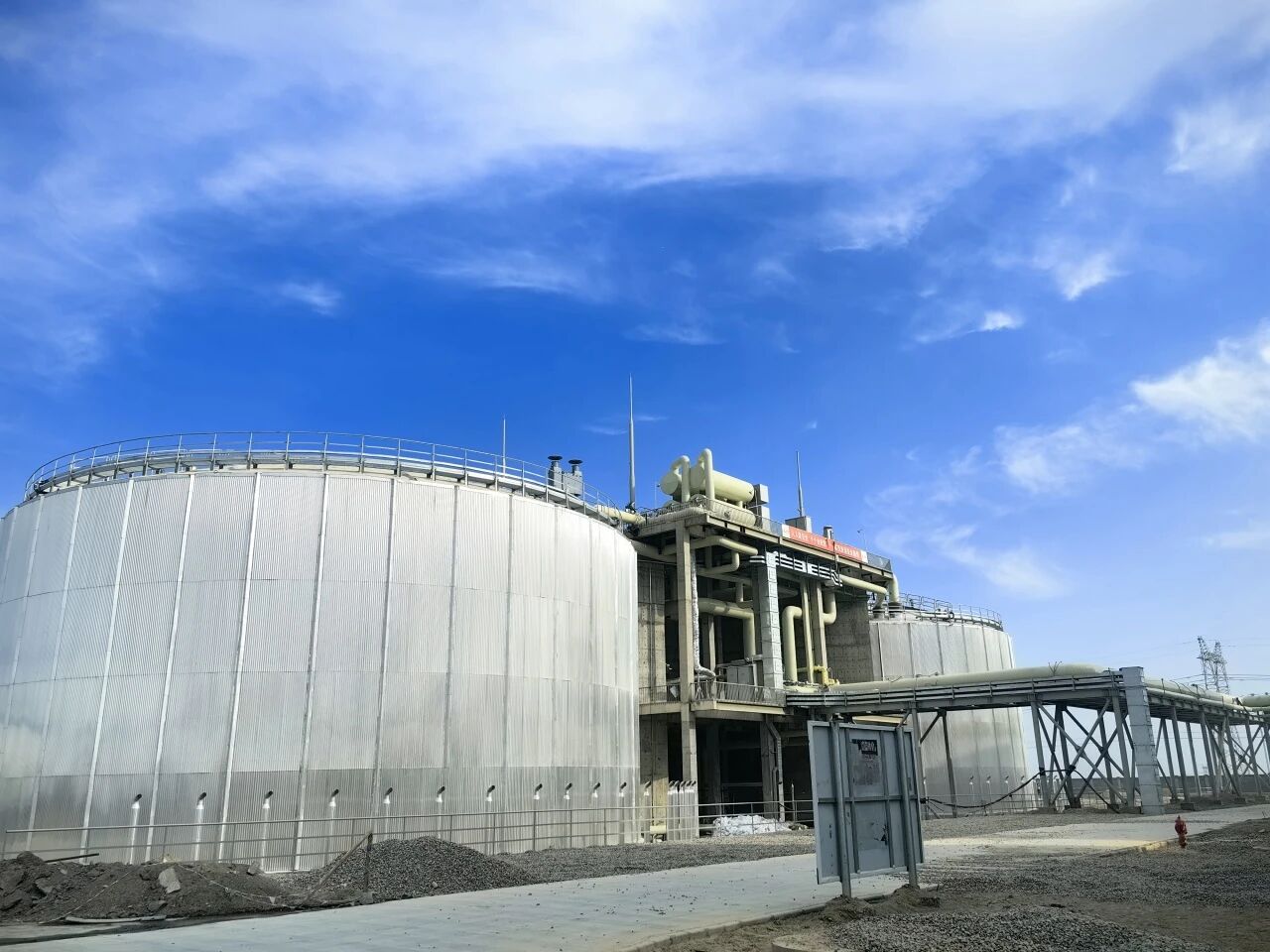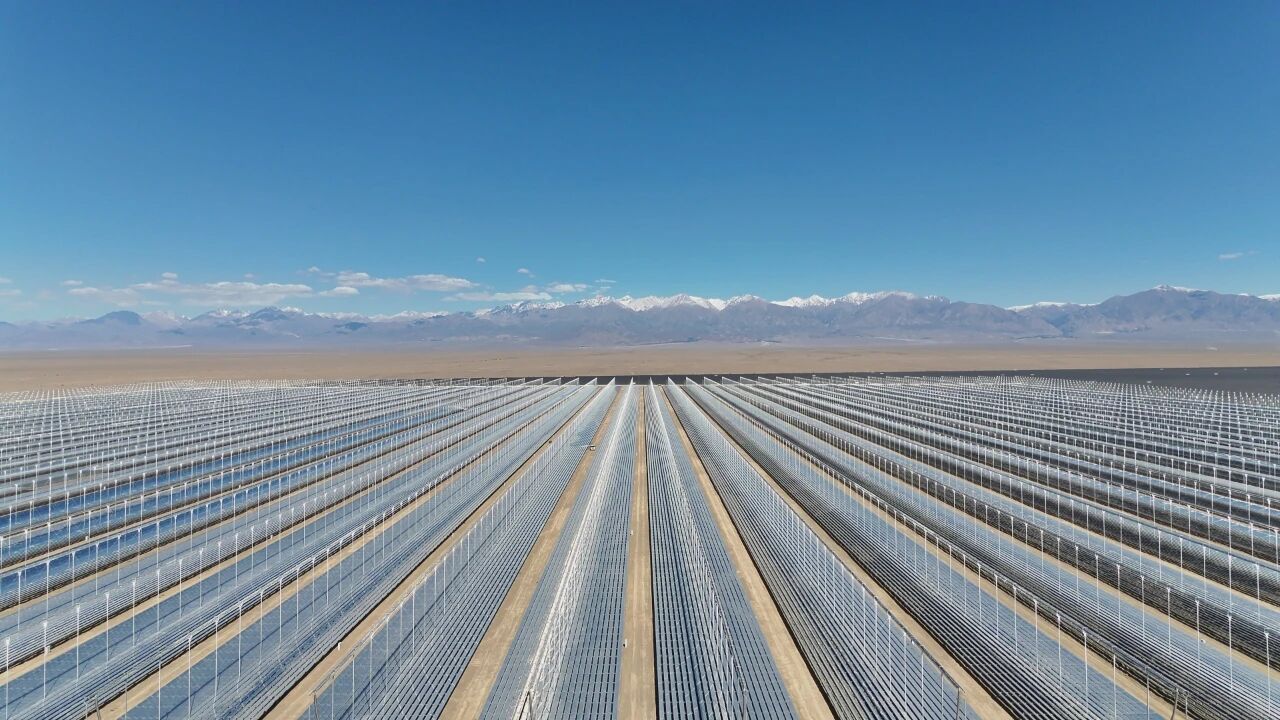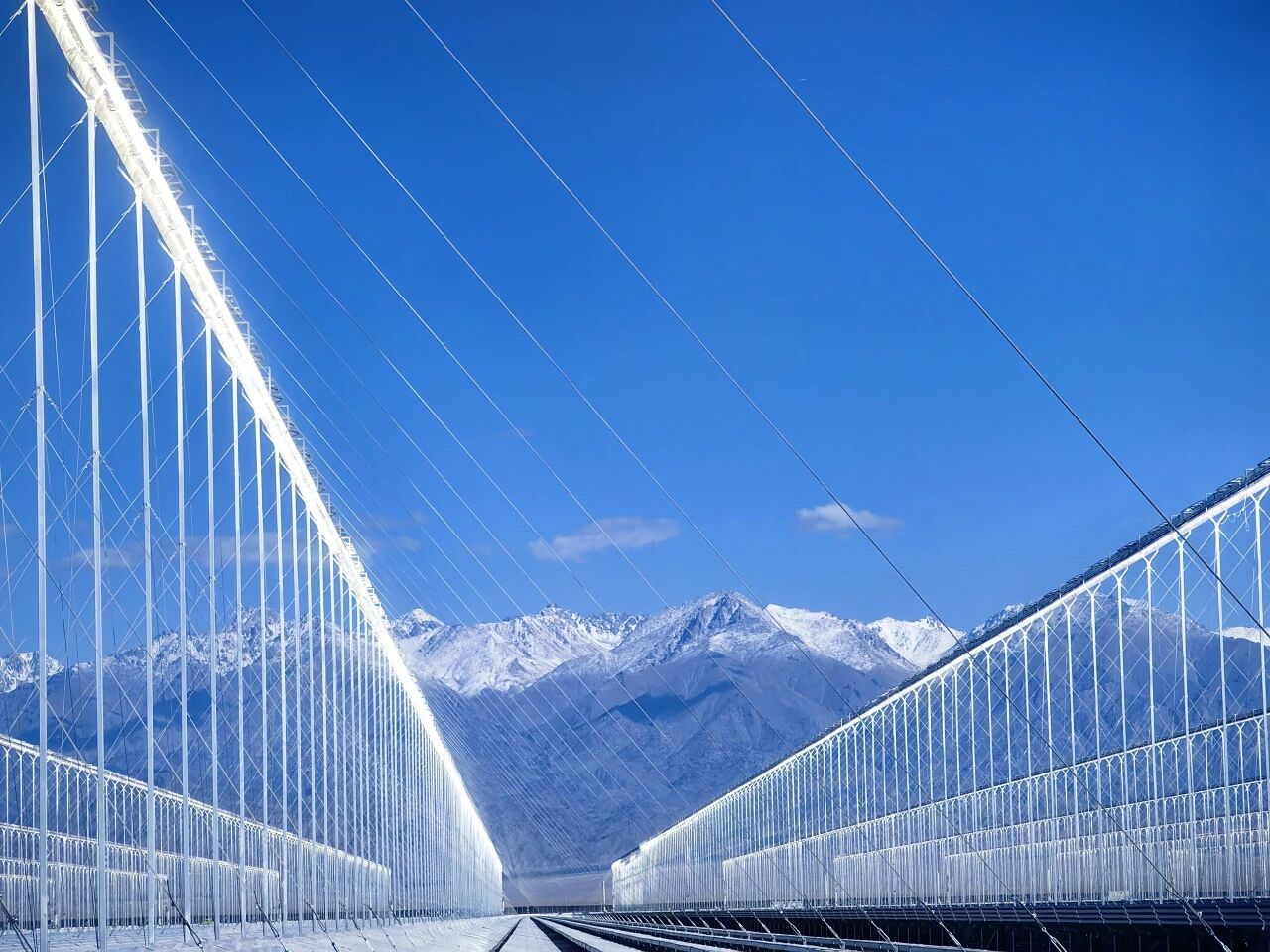2020 官网升级中!现在您访问官网的浏览器设备分辨率宽度低于1280px请使用高分辨率宽度访问。
Release time:2025/09/26
On September 18, 2025, the 100 MW concentrated solar power (CSP) portion of the China Three Gorges Hami Multi-Energy Demonstration Project—China’s largest “linear Fresnel” plant—was successfully synchronized to the grid at full capacity. China United Engineering Corporation served as the owner’s engineer. The milestone not only marks the debut of an integrated “CSP + PV” operating model, but also confirms the commercial maturity of linear-Fresnel technology and sets a new speed record for plants of this type.

The 1 GW Hami “CSP + PV” Integrated Demonstration Project is invested in and built by Three Gorges New Energy Hami Wind Power Co., Ltd. Sited in Xishan Township, Yizhou District, Hami, Xinjiang, it is the largest linear-Fresnel complex in the province. The 1 GW installation pairs a solar-thermal section with a photovoltaic section. The CSP block—the first in Xinjiang to use molten-salt linear-Fresnel technology—deploys 46 loops, each 1.2 km long, with 260,000 primary mirrors covering 800,000 m² of collector area. An eight-hour molten-salt thermal store enables generation across day-night cycles.

The plant delivers two world-first advances for linear-Fresnel technology:
Fully automated, standardized production of primary mirrors: every reflector is optically imaged; 100 % meet shape-precision specs, pushing optical efficiency 12 % above early-generation systems.Upgraded molten-salt heat-exchange loop: receiver tubes carry a selective coating engineered for higher absorptance and weather resistance, stably heating salt to 550 °C—50 °C above conventional linear-Fresnel plants—and raising thermal-to-electric efficiency by 8–10 %.At full output, the molten-salt storage turns the CSP block into a dispatchable peaking asset, complementing the PV array to create a firm, multi-energy clean-power base. The hybrid configuration solves the intermittency and volatility that have long constrained renewables, delivering stable supply, deep decarbonization, economic viability and technological leadership.

Once fully online, the complex will generate 2.067 TWh annually, save roughly 620,000 t of standard coal and cut CO₂ emissions by more than 1.63 million t each year, adding another cornerstone to China’s transition from the fossil era to the clean-energy era.